This electronic edition published in 2015 by Bloomsbury Publishing Plc
First published in Great Britain in 2015 by Osprey Publishing,
PO Box 883, Oxford, OX1 9PL, UK
PO Box 3985, New York, NY 10185-3985, USA
E-mail:
Osprey Publishing, part of Bloombury Publishing Plc.
2015 Osprey Publishing Ltd.
Bloomsbury is a trademark of Bloomsbury Publishing Plc
All rights reserved
You may not copy, distribute, transmit, reproduce or otherwise make available this publication (or any part of it) in any form, or by any means (including without limitation electronic, digital, optical, mechanical, photocopying, printing, recording or otherwise), without the prior written permission of the publisher. Any person who does any unauthorised act in relation to this publication may be liable to criminal prosecution and civil claims for damages.
A CIP catalog record for this book is available from the British Library
Print ISBN: 978 1 4728 1050 2
PDF e-book ISBN: 978 1 4728 1051 9
EPUB e-book ISBN: 978 1 4728 1052 6
www.ospreypublishing.com
Osprey Publishing is supporting the Woodland Trust, the UKs leading woodland conservation charity, by funding the dedication of trees.
To find out more about our authors and books visit www.bloomsbury.com. Here you will find extracts, author interviews, details of forthcoming events and the option to sign up for our newsletters.
INTRODUCTION
To use the word orc 100 years ago was to invite confusion. There were malicious faeries and spirits from folklore and mythology to be sure, but nothing quite like the orc. It began, as many fantasy staples did, with The Lord of the Rings. J. R. R. Tolkien set the template of the orc in modern fantasy. In his tales orcs are twisted, evil creatures the foot soldiers of dark lords like Morgoth and Sauron. Their numbers seem endless, but they can be cowardly when confronted or when their leaders are slain.
From Tolkien, orcs spread to the role playing game Dungeons & Dragons, where they became pig-faced beast-men. And from thousands of readers and thousands of gamers, orcs spread to countless fantasy worlds. Now orcs are a go-to ingredient of modern fantasy, along with elves and dwarves. They are in books, games, and hugely popular movies. If you say the word orc today, many people will nod along. Yes, orcs, of course. They have become part of our culture.
It is therefore not as strange as it might appear that Osprey, a publisher known for its extensive line of historical and military books, would commission a book about orcs. Why not take orcs, the scourge of a thousand worlds, and give them a military and cultural analysis? Why not take a fantasy race and give it the Osprey treatment? Orc Warfare, the book you hold in your hands, attempts to do just that. The book is broken down into four chapters.
CHAPTER ONE: THE ORCS
This chapter introduces the orc race. It discusses their physique and breeds, and the many branches of orc kind that have spread across worlds. Chapter 1 also includes an overview of orc society, the anatomy of an orc horde, the difference between a warchief and a warlord, and details on shamanism and magic.
CHAPTER TWO: ORC TROOP TYPES
Orcs can field many different types of troops, from common warrior infantry to the rarely seen Flesh Eaters. This chapter catalogs the troops of orcs and some of their allies, and covers their basic tactical uses in the field.
CHAPTER THREE: ORC STRATEGIES AND TACTICS
Orcs have tactics? Indeed they do, and this chapter talks about them in some detail. The various tactical roles of troops are discussed, along with specific strategies and tactics. The focus is on field battles, but there are also sections on siege warfare and naval tactics.
CHAPTER FOUR: ORC VICTORIES
Analysis is all well and good but Chapter 4 is where we can see it all in practice. Orc Victories details four battles and one siege that show how orcs fight. It wouldnt be a proper military book without war stories and here they are.
That brings Orc Warfare to a close, but not the story of the orcs. That, as ever, marches on.

THE ORCS
We were made for battle. The Smite-Father blessed us with strength and fury, the War-Mother with cunning and fortitude. When our horde is on the march, elves hide in their trees and dwarves in their caves. Their pathetic gods cannot protect them.
Trimbul, Orc Shaman
Orcs are a common threat across many worlds. Nowhere do they live in peace. Orcs do not farm. They do not write poetry. Orcs raid and fight and kill. When they are not attacking other races, they fight amongst themselves. No orc wants to grow old and soft. A good orc death comes in battle, surrounded by the corpses of enemies. That is the orc way.
Orc tribes have many, often contradictory origin stories for their race, but they all share some common points. Foremost among them is the idea that the gods of the so-called civilized races (dwarves, elves, and humans) sought to cheat the orc gods of their due. This sets up the basic dynamic of the orcs and their enemies. The civilized races are hypocrites and it is up to the orcs to take what is theirs with fire and sword. And what is theirs, according to the orc shamans? Everything!
ORC PHYSIQUE
There are three breeds of orcs: goblins, common orcs, and great orcs. Most tribes feature a mix of all three, though it is not unknown for there to be tribes of strictly one type.
Goblins (also known as lesser orcs) are the smallest. They have spindly frames and range from 4 to 5ft in height. As bigger orcs often bully them, goblins are the most likely to strike out and form tribes of their own. Roughly 25 percent of all orcs are goblins.
Common orcs are more muscular and range in height from 5 to 6ft. They make up the majority of the orc race. So much so that few bother to say common orc when talking about them. They are simply orcs. Roughly 65 percent of all orcs are common orcs.
Great orcs are over 6ft in height and monstrous. They are the toughest and fiercest members of their race. In orc culture size and strength bring status. Thus great orcs lead and dominate most warbands. Roughly 10 percent of all orcs are great orcs.
 Orcs of all breeds are ridiculously fecund. They reproduce at a rate that cannot be matched, or even approached, by their enemies. The implications of this in orc warfare are explored in the Warband and Horde section later in this chapter.
Orcs of all breeds are ridiculously fecund. They reproduce at a rate that cannot be matched, or even approached, by their enemies. The implications of this in orc warfare are explored in the Warband and Horde section later in this chapter.
Orcs are also notable for their diet. They are meat eaters. Indeed, they eat nothing else. They can consume the meat of nearly any creature. When they cannot find another source of meat, they eat each other. Goblins being the weakest, they are the first to go into the stewpot.
The shamans say that the gods bred orcs for war. Certainly no one doubts their ferocity in battle. It does not end there though. Orcs may die in battle, but they yet serve the tribe and warband. Orcs do not have funerary customs as other races understand them. Rather, the corpses of the dead are broken down for further use, starting with flesh for the hungry. Their guts can be made into bowstrings and their bones sharpened into arrow tips. Their heads can also be turned into horrific weapons (see War Machines in ). The shamans can make no sense of burying or burning the dead as other races do. Warriors should serve the tribe, in life and in death.
ORCISH SOCIETY
Orcs are a nomadic people. They must move from place to place to find fresh sources of meat. They rarely stay in the same area for more than a few weeks, except during the winter months. While camped, they engage in two main activities: hunting and raiding. The hunts are focused on big creatures like aurochs and bears, as well as mammoths when they can be found. While the hunts are dangerous, they provide great sport for the orcs and meat in large amounts when successful. Raids are launched against nearby enemies (including other orc tribes) on a regular basis. They too provide meat, but also other things the tribe needs: weapons, tools, alcohol, and shiny objects. Orcs have a particular love of raiding trading caravans that are foolish enough to go through their territory. They are easy prey for orc warbands and fat prizes.
Next page
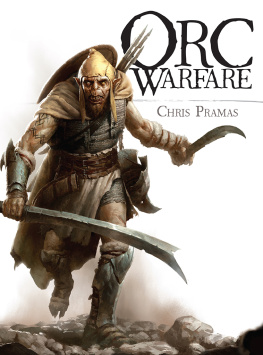
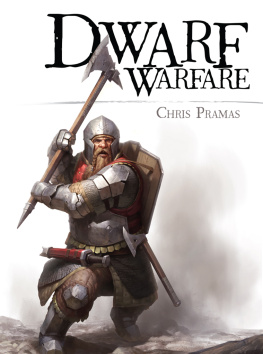
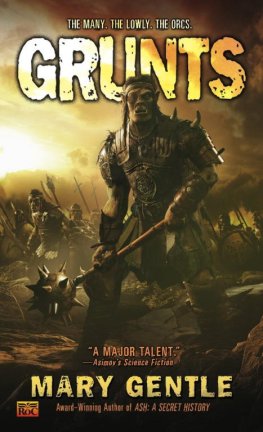

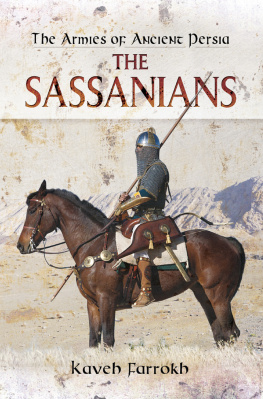

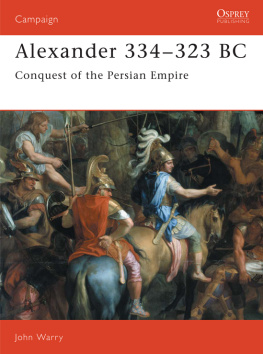
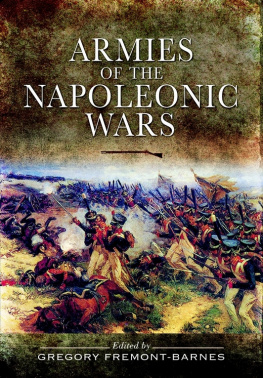

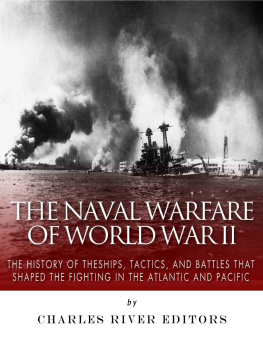

 Orcs of all breeds are ridiculously fecund. They reproduce at a rate that cannot be matched, or even approached, by their enemies. The implications of this in orc warfare are explored in the Warband and Horde section later in this chapter.
Orcs of all breeds are ridiculously fecund. They reproduce at a rate that cannot be matched, or even approached, by their enemies. The implications of this in orc warfare are explored in the Warband and Horde section later in this chapter.